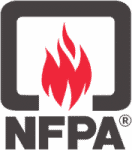VA, NC, MD & DC
(804) 355-7255
- Safety Audits
- >
- Hazard Analysis & Assessments
- >
- Lockout/Tagout Risk Assessment
Lockout/Tagout Risk Assessment
Lockout/Tagout Risk Assessments provide essential information for ensuring worker safety, OSHA compliance, and developing an Energy Control Program. Circle Safety will conduct the lockout/tagout risk assessment at your facility, walking your floor and identifying risks. We then present our findings in a written report with procedures for each identified risk.
OSHA and other regulatory agencies mandate lockout/tagout protocols to prevent serious worker injuries caused by the accidental start-up of equipment or release of stored energy. By implementing an Energy Control Program, your company can establish procedures to control an energy source during the servicing and maintenance of equipment and help prevent serious, and sometimes deadly, incidents..
What Does the Assessment Include?
- Identify all tasks—Each work activity involving contact with hazardous energy will be identified. This includes setup, installation, removal, maintenance, operating, adjusting, cleaning, troubleshooting, and programming.
- Identify the hazards of each task—What type and magnitude of energy are involved?
- Assess potential employee exposure to the hazards.
- Assess the probability of the occurrence of the hazard.
- Evaluate the severity of the risk.
- Develop lockout procedures to minimize the risk.
Benefits
- Protects the health and lives of workers
- Ensures OSHA and other regulatory compliance
- Establishes a well-defined lockout/tagout plan
- Allows for the development of your company’s Energy Control Program
- Protects your company’s reputation
What Is Lockout/Tagout?
Lockout/tagout involves manually de-energizing and securing equipment, machinery, or processes so hazardous energy isn’t re-introduced during servicing or repair. This includes closing electrical circuits and valves, neutralizing extreme temperatures, securing moving parts, and more.
Each employer must have an Energy Control Program outlining the steps to de-energize machines and lock out energy sources. A lockout/tagout program reduces the risk of injury due to the unintended or accidental release of hazardous energy.
Frequent consequences of not properly implementing lockout/tagout procedures include worker death, OSHA citations, and massive penalties.
Specific Steps Involved in the Lockout/Tagout Procedure
- Basic Lockout Steps
- Preparation for Lockout – Review the procedure
- Notify all affected employees of the Lockout
- Shutdown the equipment using the normal shutdown procedure
- Isolate the machine from the energy source
- Apply the Lockout device and tags to each energy source
- Release any stored energy
- Verify that the equipment is de-energized by attempting to operate
- Perform work
- Before releasing Lockout – Inspect the area to ensure tools are removed and the machine is reassembled
- Notify all affected employees of the release
- Remove the lockout device
- Start the equipment
Potential Hazards Associated With Lockout/Tagout Procedure
- Electrical
- Mechanical
- Pneumatic
- Compressed Air
- Radiation
- Flowing
- High-intensity electromagnetic fields
- Chemical
- Gravity
- And more

“Very impressed with their capabilities. Glad to find a local firm industrial hygiene issues at a high level.”
– Major K.
Lockout/Tagout FAQs
In addition to electricity, what else can “hazardous energy” include?
Hazardous energy sources include chemical, thermal, pneumatic, hydraulic, mechanical, and more.
How often do lockout/tagout procedures need to be updated?
Your company must review and certify your lockout/tagout procedures annually.
What does “stored energy” mean?
After you’ve unplugged the machine from its power source, it could still have an immense amount of energy stored in its internals. That energy could suddenly, explosively, and catastrophically be released while your employees are servicing the machine. This is why it is vital to release any remaining stored energy before giving the all-clear.
What does a lockout/tagout assessment cost?
The cost of a lockout/tagout assessment varies based on several factors, including:
- Size of your operation
- Number of energy sources
- Tasks that must be performed
- Complexity of lockout procedures
Need a Lockout/Tagout Assessment?
Let us help your business create lockout/tagout procedures to help ensure OSHA compliance and the safety of your workers. Click below to learn more.
Memberships & Associations







Footer #3 Widget
This is an example of a widget area that you can place text to describe a product or service. You can also use other WordPress widgets such as recent posts, recent comments, a tag cloud or more.
Footer #4 Widget
This is an example of a widget area that you can place text to describe a product or service. You can also use other WordPress widgets such as recent posts, recent comments, a tag cloud or more.
Circle Safety & Health Consultants © 2025 | Privacy Policy | Sitemap
